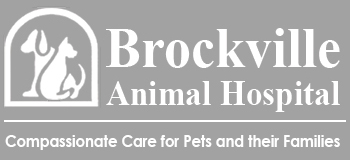Library
-
Stomach tumors are uncommon in dogs and cats. There are many kinds, including leiomyosarcomas, lymphomas, adenocarcinomas, mast cell tumors, fibrosarcomas, plasmacytomas, gastrointestinal stromal tumors (GISTs), and carcinoids (all malignant); and leiomyomas, adenomatous polyps, and adenomas (benign). Most tumors are malignant. Stomach tumors are more prevalent in older animals, males, and certain breeds. The signs of stomach tumors include chronic vomiting, inappetence, lethargy, and weight loss. Sometimes tumor ulceration will cause anemia. Paraneoplastic syndromes are possible with the muscle tumors. Stomach tumors may be diagnosed with imaging, endoscopy, or surgery, with a biopsy. Treatment may involve surgery, chemotherapy, or radiation therapy.
-
Administering supplemental fluids can benefit dogs with a variety of medical conditions. Giving injections is outside the comfort zone for almost anyone outside the medical profession; however, subcutaneous fluid administration is not nearly as difficult as it sounds. Your veterinary healthcare team will provide you with all the equipment that you will need to administer fluids to your dog. They will go through the steps with you in person. Do not use the fluid bag if cloudiness or discoloration develops in the fluids.
-
Sudden acquired retinal degeneration syndrome (SARDS) causes blindness in older dogs, most often females. The underlying cause of SARDS is unknown and there is no effective treatment for the condition. This handout explains the clinical signs observed in affected dogs, how the condition is diagnosed, and how to support a dog with SARDS.
-
Home care after surgery mainly involves the restriction of physical activity. Excessive physical activity often leads to injury or serious complications. Monitor the incision daily for signs of redness, swelling, discharge, or excessive licking, and never apply anything to the incision unless instructed to do so. To keep your dog from licking, your veterinarian can provide you with a protective collar or recovery suit. Your dog should gradually improve each day.
-
The main objectives of fracture repair are to promote rapid healing of the fracture and to get the dog using its leg as quickly as possible. In most cases, this involves rebuilding the broken bone and fixing it in that position with metallic implants. Post-operative care includes pain medications, antibiotics, adequate nutrition, exercise restriction, and physiotherapy. Most fractures can be repaired very effectively and in many cases, your dog will resume normal activity.
-
At first glance he may look like a short-legged Cocker Spaniel, and it is true, the Sussex Spaniel is one of the more unusual spaniel breeds. He is also one of the rarest of all AKC breeds, perhaps because he tends to be, shall we say... talkative, especially if left out of the fun. Otherwise, this mild-mannered spaniel makes a great pal and an easygoing, often overlooked family pet.
-
Skin gland, hair follicle, and sebaceous gland tumors are often benign. Matrical carcinoma and sebaceous gland adenocarcinoma are rare and more aggressive forms of the disease. Regardless of the type (sweat, hair, or sebaceous) diagnosis is made by fine needle aspiration, biopsy, and/or surgical removal and histopathology. Further treatment is reviewed.
-
The Swedish Vallhund is an alert, active, playful dog, always ready to join in whatever adventure you have in mind. He's devoted to family, especially good with children, and friendly to strangers.
-
Syncope (or fainting) is defined as a temporary loss of consciousness that occurs when the brain does not receive enough oxygen. Most dogs who experience syncope spontaneously recover once appropriate levels of oxygen reach the brain.
-
This handout explains syringomyelia and Chiari-like malformation in dogs, in which fluid-filled cavities in the spinal cord develop, leading to an abnormal sensation in affected dogs. The clinical signs of the condition, along with diagnosis, treatment, and prognosis, are described.

